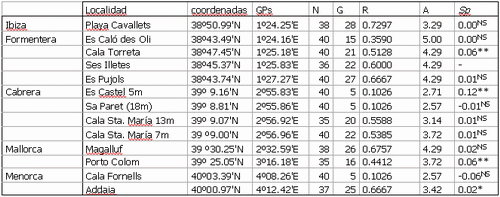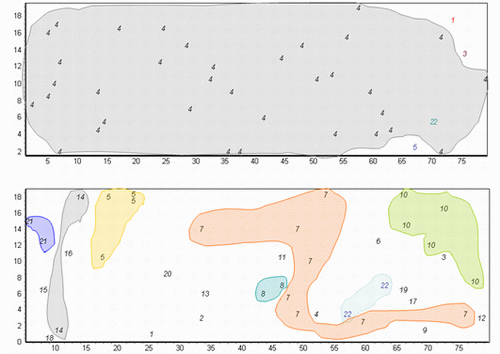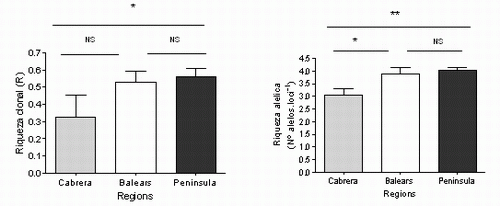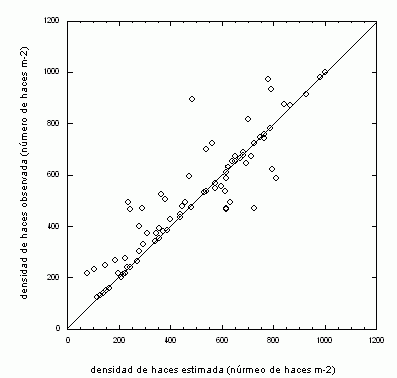Participating
Imedea staff:
Carlos M. Duarte, Research Professor CSIC; Núria Marbà,
Scientific Expert of the CSIC; Jorge Terrados, Scientific Expert of the
CSIC; Txetxu Arrieta, Posdoc; Cristina Barrón, Doctoral candidate;
Elena Díaz, Doctoral candidate; Neus Garcías, Doctoral candidate;
Raquel Vaquer, Doctoral candidate; Juan Carlos Alonso, staff Expert; Regino
Martínez, hired Expert ; Rocío Santiago, hired Expert; Elena
Varela, Posdoc visitor from the Universidade do Algarve; Sophie Arnaud,
Posdoc Universidade do Algarbe; Ester Serrao, chair professor at Universidade
do Algarve.
Aims:
To carry out a study on the stability, demography and evolution
(stationary, in recession or in expansion) of the habitats situated within
the reserve and the effect that protective measures has on them. The conclusions
of this study are to delve into the causes of field recession. Also to
be included is the frequency of sexual reproduction in this plant’s
population, the net production and other aspects that affect the biomass
and the richness of the communities of species associated with the fields.
All the mentioned aspects are to be studied by means of techniques of
dating, reconstruction, and plant marking, at graded stages of progressive
depths of water.
Summary of activities carried out:
To implement this action the following sample-collecting campaigns
were carried out: 22 one-day campaigns in Mallorca, 10 four-day campaigns
in Cabrera, 6 five-day campaigns in Ibiza-Formentera, and 2 days in Minorca.
Three to five persons participated in each campaign. Most sample campaigns
were devoted to validating the demographic projections of Action A4 in
SCI areas of the Balearics, on the basis of real demographic estimations.
One campaign in Ibiza, another in Formentera-Ibiza and another in Minorca
were devoted to collecting samples of Posidonia oceanica in order to evaluate
the richness of genetically different individuals found at 13 different
fields in the Balearics. Molecular markers were used in order to determine
genetic differences.
1. Demographic dynamics of Posidonia oceanica and validation
of demographic projections.
Between 2000 and 2002, 3 permanent study plots were set up, measuring
between 0.09m2 and 0.72m2 at each of 17 fields of Posidonia oceanica located
within SCI areas round the Balearics. The bushes within these plots were
counted annually throughout the duration of the project in order quantify
the annual birth and death rates of the bushes, as well as to determine
their net growth rate of the . Throughout the duration of the project
annual counts of the bushes in these fields were carried out, and between
3 to 5 demographic census counts obtained from each field studied , adding
up to a total of 240. Three to four divers participated in the collecting
of samples. Data obtained was introduced into an Excel database in order
to be analysed, as soon as divers emerged.
From the data obtained in the sampling campaigns it has been possible to evaluate the chronological evolution of the density of P.oceanica plants in fields situated round the Balearics and also to establish the degree of accuracy of the demographic estimates on the future evolution of the field (provided by Action A4). This has made it possible to assess whether the fields are in expansion, decline, or in dynamic balance and to determine at what rate these processes are taking place. The detailed results are available in the “Action F3-deliverable” document found in the Annexe of the Memoir.
2.-Degree of genetic and clone diversity.
The first observation made it clear that clone are not very diverse in
the fields off Cabrera (form 0.10 to 0.56, on average 0.33±0.13;
Table 1), although the average is lower than the average found along the
mainland coastline (0.56±0.05) and around other Balearic islands
(0.53±0.07; Fig. 1). Two of the fields studied off Cabrera are
in fact strongly dominated by a clone to which more than 80 % of the sequenced
bushes come from. (Fig.1). This difference is also reflected in the important
differences in the level of allelic richness. which is systematically
lower in Cabrera in comparison with other coastal areas of Spain.
The low clone variability and the reduced allelic richness
may be due to the diminishing demographic density of this field which
also suffers the highest death rate and the lowest rate of recruitment
of all the fields studied in the Balearics (Marba et al. 2005).
The field experiencing the most spectacular recession (50 % in 2.7 years)
is that of Sa Paret where one single clone dominates the population (Fig.
1), and the other field which is also dominated by a single clone, es
Castell, is also in frank recession. This clone structure of the fields
is perhaps due to a possibly selective death rate, with some large clones
being more resistant whereas the smaller clones are more vulnerable and
may be lost during the initial stages of recession of the field. In the
case of other plants reproducing by cloning, it is commonly accepted that
those organisms that develop to their fullest size and live longest are
selected precisely because they have demonstrated their ability to survive
in a wide range of varying environmental conditions during their period
of growth (Lynch 1984). These clones may be intrinsically able to survive
degraded environmental conditions and demographic decline. In effect,
the fact that the clone sub-rank was found to be very diverse among all
fields , shows that the largest sizes were found at Sa Paret and Es Castel,
where the larger sized clone dominates. If these distances were reached
through clone growth, these observations imply that clones are at least
600 / 700 years old, at a minimum, as they occupy the whole of the sample
area studied and probably extend further.

Table 1: details on the sample locations, with GPS coordinates, number of bushes collected (N), number o clones/genets (G) identified, clone diversity( R) and genetic diversity in terms of number of allele locus (A), and genetic structure of the population as detected through the analysis of special autocorrelation (Sp). Results obtained for Majorca are detected and for comparison purposes the results for other submarine fields along the Spanish coastline are given.
Further, it was observed that the allelic richness was also very low in the fields of Posidonia off the island of Cabrera, and may be due, at least in part, to the high mortality and the low clone diversity. The expected consequence of the loss of genetic variability, in the medium and long term, is the disappearance of some positive synergies between different population varieties, such as a diminishing possibility of finding an adequate variation in case of extreme environmental change. This limitation in the capacity of the plant to adapt may produce extinction at certain locations.

Figure 1: map of the spatial distribution of the clones situated off Cabrera, Sa Paret and Santa María.

Figure 2: Comparison of the rate of clone and genetic diversity off Cabrera and the Iberian mainland or other islands of the Balearics. Results of the paired t test (an asterix indicates significant contrasts at the level of 5 %, two when significant contrast is at the level of 1 %).
3.-Level of genetic structure of the
population
The degree of dispersion, and its possible limitation to the scale of
sampled areas (1,600 sq.m) was analysed through methods of special autocorrelation
( without the replicates in order to study expansion of the population
via sexual reproduction; Table 1). This analysis yields stochastic census
of the distribution of clones at most fields, where no relation between
genetic distance and geographic distance was found.
That suggests there is an absence of limitation of the expansion of seeds
at the scale sampled, or that the required statistical capacity is not
available. At other fields, as in Sa Paret, there appears a relation that
suggests genetic proximity of the clones found nearest in the field. That
suggests that a strong genetic sub-structure takes place under certain
conditions, resulting from a limitation of the dispersion within a given
field.
Application of the results obtained through Action F3
to the project:
The results of this action reveal that the state of health of the Posidonia
oceanica fields in the SCI areas studied during the last 4.5 years is
as follows:
1.SCI Area Marina of the North of Minorca: The Posidonia oceanica field here was in recession between the years 2002 and 2004. The net growth rate of the population in this period was estimated to be minus 8.7 % per annum, and this indicates that the density of the field will decrease by half in 7.9 years.
2.SCI Area of the Bay of Pollensa: field in strong recession during at least the last four years. The demographic evolution of the population is identical to the one foretold during the first year of study, and shows that the speed of recession has remained constant throughout time. This suggests that the cause of the recession observed has remained the same in these four years. The presence of Caulerpa prolifera in this field of Posidonia oceanica and the high rate of sedimentation of organic matter in the field could be the cause of the recession.
3.SCI Area of the Bay of Alcudia: field tending to recede. Recession in this field has not continued at the same rate throughout time, at least during the last four years, due to episodes of high mortality. Due to the low rate of bush recruitment the field has been unable to recover the state it was in five years ago. The results obtained indicate that the stability of this field is very vulnerable to disturbances that slightly increase the death rate of its bushes. The presence of Caulerpa prolifera, a species found in the field although for the moment not abundant, could contribute to an acceleration of the recession observed.
4.SCI Area of the East Coast: During the project the field of Posidonia oceanica in the Bay of Portocolom has gone from a state of recession to one of expansion. The change observed in the state of the field is due mostly to an exceptional increase in the rate of bush recruitment. The high level of bush recruitment and its ensuing increase in clone growth demonstrate that growth conditions for Posidonia oceanica in this area have improved in the last 3 years.
5.SCI Area of Cap Salines: The state of Posidonia oceánica in the SCI Area of Cap Salines is good off the coast of Cap Salines where the field is in demographic balance. In contrast, the field situated off Colonia Sant Jordi has been in recession during the last four years. Nevertheless, during the last year and thanks to an increase in the rate of recruitment, the field tends to recovery. This increase in the rate of recruitment reveals that environmental conditions have improved growth.
6.SCI Area of Cabrera: Most (88%) of the P.oceánica population studied in the SCI area of Cabrera were in recession between 2000 and 2004, and this recession continued throughout 2005 in 55 % of the fields. The great similarity between projected demography and the evolution in time of the density observed at most of the study-stations examined in this SCI, reveals that the disturbances causing regression of P.oceanica fields in this area have persisted during the last 4-5 years. The fact that P.oceanica has tended towards recovery at locations where study-stations are situated in less deep waters indicates that growth conditions have improved recently.
7.SCI Area of Ses Salines d'Eivissa-Formentera: The P.oceánica
fields of the SCI area of Ses Salines Ibiza-Formentera have remained in
a stationary state in the last years, confirming their good state of health.
Evolution in time of the density of these fields is similar to that projected
on the basis of the estimated net growth rate of the population during
the first year. This indicates that conditions favourable to the development
of P.oceánica in this area have continued throughout the last 5
years. The drastic drop in bush survival observed at Illetes during the
last year indicates that some recently occurring disturbing factor has
been affecting the field locally .The low recruitment rate at Illetes
is insufficient to compensate for the loss of bushes caused by death in
the last year. In the same manner the low bush recruitment rate observed
at Es Pujols indicates that this field is vulnerable to disturbances which
slightly increase the death rate of the field’s bushes.
These results indicate that 50 % of the fields situated in SCI areas of
the Balearics have been in recession throughout the last 5 years, whereas
in 30 % of the fields the tendency towards recession has reversed in the
last year. The SCI area fields of Ses Salines at Ibiza-Formentera are
the only ones which have maintained stable density in the last 5 years.
The results of this action show that the evolution in time of the density
of bushes in the fields can be projected up to at least 4-5 years in the
future and based on estimations of the net growth rate of annual populations
(Fig. 3).

Fig. 3. Relation between the projected density of bushes, based on the modelling of P. oceanica demography during the first year of study, and the density observed in the fields found in SCI areas of the Balearics in the last 4.5 years. The continuous line indicates a relation of 1:1.
This indicates that, should it be decided to carry out periodic controls of the state of fields in SCI areas which are in good condition, these controls should be done every five years. The only SCI among those studied where five-year controls of the health of P.oceanica could be carried out is that of Cap Ses Salines in Majorca. Monitoring controls of fields suffering recession, and of fields identified as vulnerable, should be carried out in shorter time spans, annually or bi-annually, as is the case of fields found at the following locations: SCI Area North Marina of Minorca, Pollensa, Alcudia, East Coast, Cabrera, and in some areas of Ses Salines of Ibiza-Formentera (i.e. Illetas).
It has been observed that during the last year there
has been a tendency towards recovery in some fields situated under shallow
waters in, thanks to an increase of bush birth as a consequence of the
increase in clone growth, indicating an improvement in environmental conditions
in these areas. The wide geographical area in which fields showing an
increase in the birth of bushes are found, (including the Bay of Santa
María in Cabrera, where human pressure is non-existent), suggest
that the origin of the improvement in environmental conditions could be
climatic. The recovery of these fields cannot be attributed to measures
enacted to protect the SCI areas previewed in the project as by the time
Action F3 had been completed, anchoring in SCI areas had not yet been
regulated.
The study of the evolution in time in terms of the survival rate of bushes
found in SCI areas of the Balearics indicates that the rate of survival
has remained more or less similar throughout the last 4-5 years, and that
in most fields it is inferior to the birth rate
of bushes. This in turn indicates that the intensity of sources of disturbance
causing the high death rate of bushes has continued unabated during the
time span of the project. Two of the principal factors identified as causing
overly high mortality of bushes in Posidonia fields of the Balearics are
an excess of nutrients and an excess of organic matter. The great vulnerability
that fields in the Balearics suffer when facing an excess of nutrients
and organic matter is due to the fact that sediments along most of the
Balearic coastline are rich in carbonates and deficient in iron. The latter
metal is an essential nutrient of P.oceanica and precipitates together
with sediment sulphides—which are toxic for the plant. Besides this,
non-regulated anchoring in SCI areas could constitute another cause of
the excessive bush mortality observed during the project in P.oceanica
fields. The excessive bush mortality in Cala Santa María pertaining
to the SCI of Cabrera suggests that there are also disturbances caused
by climate and/or of non-human origin.
In view of the results obtained thanks to this action, it is recommended
that SCI area management schemes should include a monitoring plan in order
to periodically check the health of fields—either every year or
every five years, depending on the state of the fields; and that in SCI
areas where P.oceanica fields are not in good condition, regulation of
anchoring should be implemented. Further, it is recommended that management
plans consider intervening in order to diminish the quantity of nutrients
and organic matter deposited in the SCI areas of Pollensa and the Bay
of Alcudia.